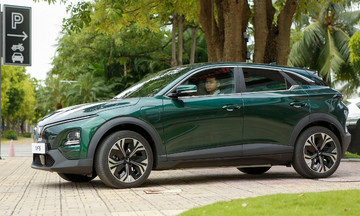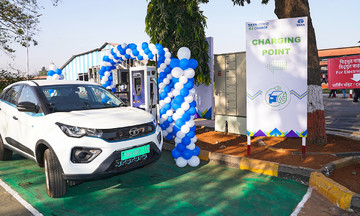The battery is one of the most expensive components of an electric scooter, and its lifespan degrades with frequency, duration, and usage habits. Depending on the technology, electric scooter batteries have different average lifespans. Common lithium-ion batteries typically last for around 500-800 charge-discharge cycles (equivalent to 2-4 years). Lithium iron phosphate (LFP) batteries can reach 1,000-2,000 cycles (equivalent to 4-7 years). Lead-acid batteries only achieve about 300-500 cycles (equivalent to 1.5-2 years).
After this period, battery performance begins to decline, leading to noticeable signs during operation. Here are some indicators that your battery is worn out and needs replacement.
Significantly reduced range after each charge. One of the most noticeable signs is a considerably shorter travel distance compared to when the scooter was new, even after a full charge. Typically, if the range is only about 50-70% of what it was when new, it means the battery's actual capacity has dropped significantly. This is often accompanied by other signs such as quick charging or the scooter's inability to accelerate rapidly multiple times as before.
If your range drops below 50%, the battery is nearing failure and could affect other components like the battery controller or motor.
Unusually short or long charging times. A worn-out battery often charges unusually quickly but depletes rapidly during use. Conversely, if the charging time is longer than normal, it could also indicate damage to one or more battery cells, affecting the overall charging process.
The lithium-ion battery pack on the Honda ICON e: electric scooter. Photo: Luong Dung |
The lithium-ion battery pack on the Honda ICON e: electric scooter. Photo: Luong Dung
Rapid battery drain even when not in use. It's normal for a scooter to lose some charge when not in use, but this should be minimal, around 1-3% per day. If the drain is greater than this, the battery is no longer holding a charge effectively, or there's a problem with the battery control and management system.
Loss of acceleration. A common sign of a weak battery is a decrease in acceleration compared to before, or sudden deceleration during rapid acceleration. This happens because a worn-out battery can't provide enough current to power the motor. In some scooters, a weak battery can even cause sudden power loss, especially when carrying heavy loads, going uphill, or operating continuously at high speeds.
Swelling, unusual heat, or strange odors from the battery. A battery nearing the end of its life may swell, overheat, or emit strange odors during use or charging. With lithium-ion batteries, swelling often comes with a risk of fire or explosion if charging continues. Lead-acid batteries can leak, corroding terminals and causing short circuits.
If you notice signs of a worn-out battery, take your scooter to a reputable technical center for accurate capacity testing instead of continuing to use it, which could worsen the damage. If the battery has only slightly degraded and only a few cells are damaged, the issue might be resolved by replacing the affected cells or the battery controller. If the battery is severely degraded and retains only about 60-70% of its original capacity, it needs replacing to ensure both safety and performance. Continuing to use a worn-out or damaged battery can lead to short circuits, fire, or explosions during charging.
Ho Tan











